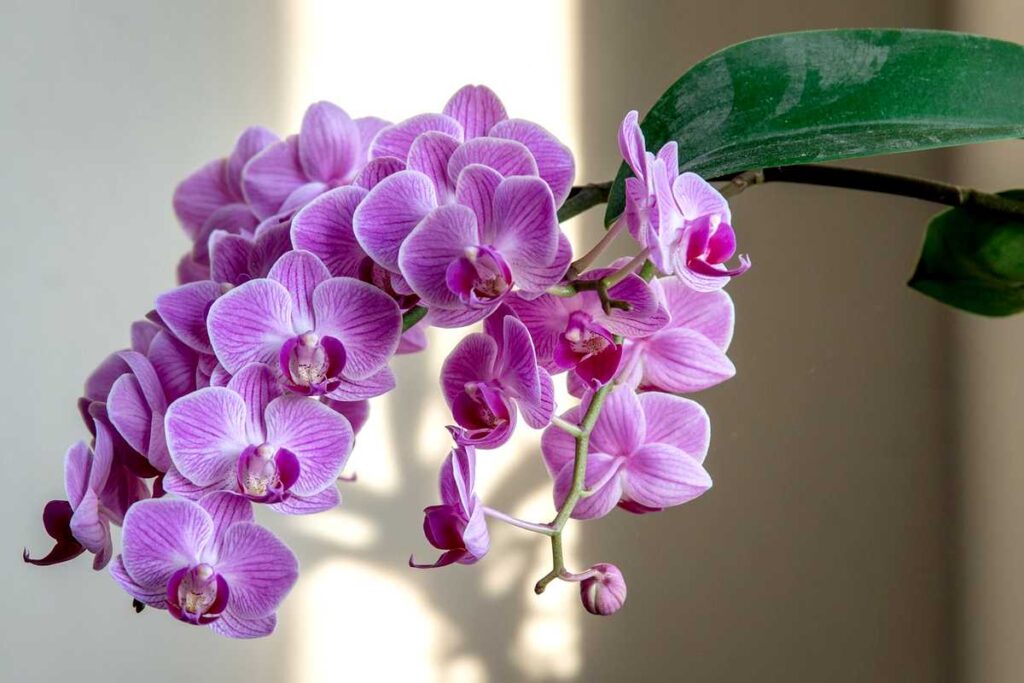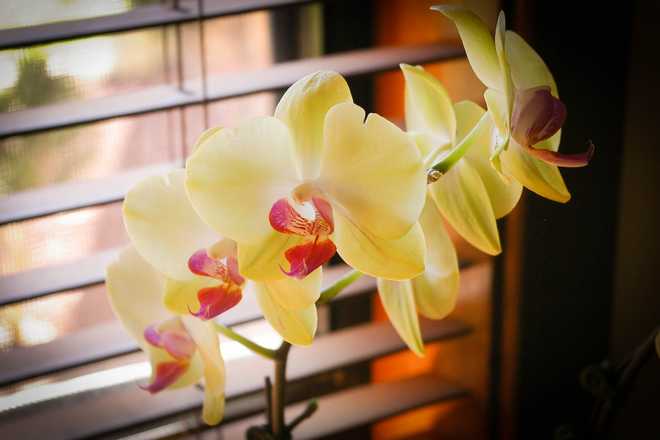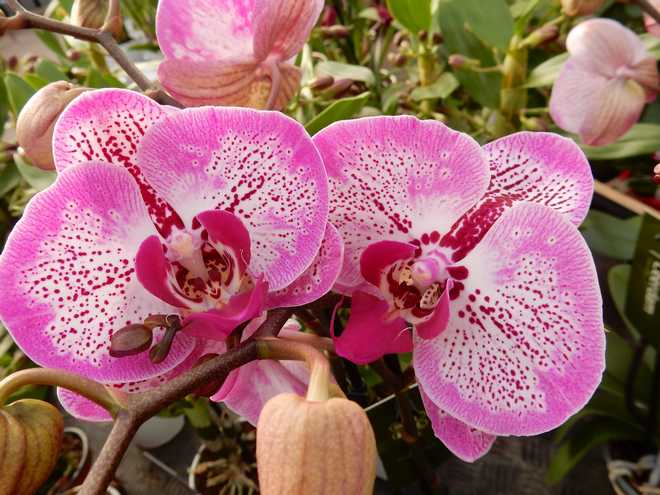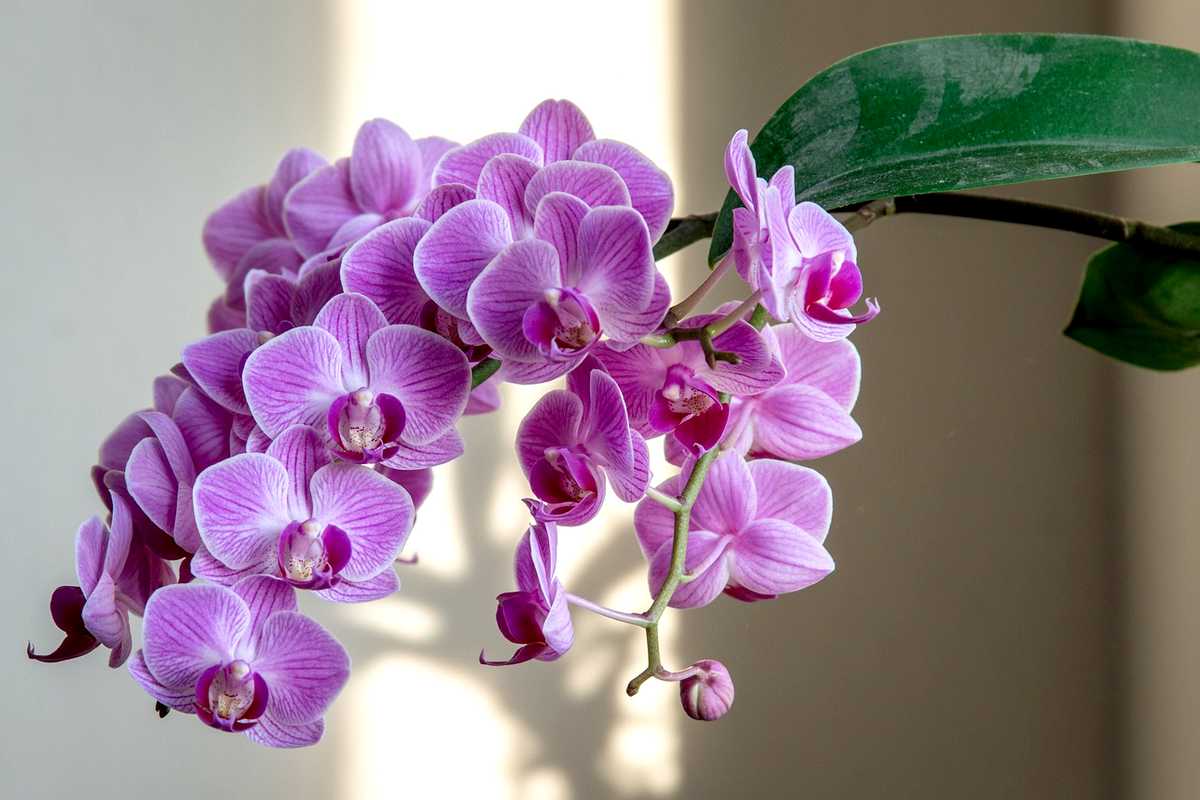
Refined, easy to grow and very floriferous, these are the main qualities of the phalaenopsis orchid. No wonder then that in the space of 2 decades, this plant once reserved for the luxury world has been democratized to the point of nowadays being one of the best-selling houseplants in France. Find out in this article how to carry out its maintenance.
What there is to know :
Botanical name: Phalaenopsis
Common name: phalaenopsis orchid, moth orchid
Family: Orchidaceae
Height x spread: 20 to 60 cm when the plant has its flower stalks.
Foliage: The phalaenopsis orchid develops a single, short, elongating stem with age, on which the fleshy, oval, elongated, dark green leaves form.
Flowers: The flower stalks appear at the base of the leaves, one at a time, sometimes in pairs, more rarely in 3. The flowers they bear, of great beauty, last 2 to 3 months but it is quite easy to make orchids bloom again.
Exposure: On a window sill to the east, north or west, less than 1 meter from the glazing, but without direct sunlight. Screen the sun with a light sheer if necessary.
Growing medium: Mixture of pine bark and draining materials: expanded clay, clay balls, perlite, moss.
Temperature: 16 to 25 ° C, away from drafts

How to water an orchid?
The frequency of watering depends on the temperature, the condition of the orchid and the number of roots. Generally, 1 watering per week or every 10 days is sufficient.
However, observing the roots remains an essential point: this is the reason why it is better to grow Phalaenopsis in transparent pots.
Here are 2 important landmarks to take into account:
When the roots are grayish and wrinkle, there is usually a lack of water.
Otherwise, when hydrated and active, the roots are quite green.
In all cases, it is essential to let the pot drip well and to remember to remove the excess water from the pot to avoid root rot.
Between two waterings, misting the leaves and roots with non-calcareous water helps maintain a humid atmosphere.
How to repot a Phalaenopsis orchid?
The butterfly orchid normally produces many roots, both in the pot and aerial roots emerging from it.
Repotting is necessary every 2-3 years in the spring, when the new roots are all coming out of the pot, if the orchid no longer holds itself upright in the pot, or if its roots are damaged, diseased and starting to mold.
Choose a pot that is only slightly larger. You can also do this repotting using the same pot. It is done after flowering, between spring and summer.
Take the time to remove all of the old growing medium stuck between the roots. You can then replace it with a new special orchid substrate that you will find in garden centers. Take advantage of the operation to prune away the dead and dry roots.
Pruning and fertilizing for your butterfly orchid
The rest of the maintenance is to prune the flower stalk when the plant has finished flowering and the stalk dries up. Cut the stem to keep only 3 knots at most.
Fertilization: Add one dose per month of special orchid fertilizer between March and October, always after watering. For a more practical aspect, you can also use fertilizer sticks which diffuse more slowly.
If this supply is regular, it will help the plant to produce a new flower stalk on which new flowers will bloom once a year.

Notable varieties of Phalaenopsis
There are many varieties of Phalaenopsis orchids, now all hybridized and crossed with other species of orchids: in particular Vandas and Ascocentrums.
These hybrids are selected for their ability to produce 2 to 3 simultaneous flower stems or just one, but very branched.
- The most classic offer large flowers in white and pink tones.
- Some original hybrids have contrasting flowers, more or less marked with a dotted effect of a darker color (bright pink, purple) which provides amazing spots and patterns.
- Other hybrids have unusual flower colors: yellow, orange, pink …
- Finally, there are miniature phalaenopsis orchids, 10 to 12 cm high, from cuttings of varieties with small development, but they are more fragile.
5 tips for successful cultivation of the phalaenopsis orchid
- Already avoid exposing your Phalaenopsis to the sun, even for only part of the day. Its direct radiation dries up or stains the leaves.
- Then give your plant as much light as possible, especially in winter.
- Keep orchids indoors all year round: they enjoy stable temperatures (between 16 and 25 ° C) and are sensitive to drafts. Below 16 ° C, it is too cool for them. Above 25 ° C, too hot and drying out. So don’t move them to a veranda in the winter, or outside in the summer.
- Remember to remove the water that stagnates at the bottom of the flowerpot after each watering.
- Water your orchid without wetting the leaf axils to reduce the risk of rot. Use room temperature water to avoid thermal shock, as much as possible from rain.

